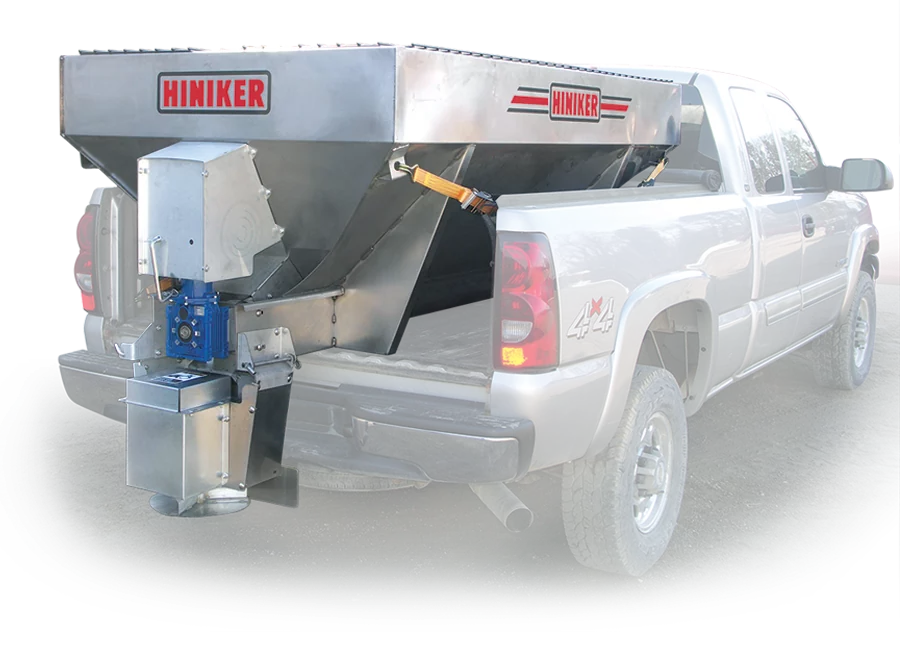In the snow removal and road maintenance industry, staying ahead of the curve is essential. For companies like Hiniker, the evolution of the spreader market has been a fascinating journey. Over the past two decades, this industry has witnessed significant changes in technology and materials, allowing Hiniker to adapt and thrive. In this blog, we will take a closer look at Hiniker’s transition from mild steel to stainless steel, auger spreaders, and now to poly hoppers, highlighting how these innovations have shaped the ice control spreader market.
October 31,, 2023 | Staff Editor
From Mild Steel to Stainless Steel
A couple of decades ago, spreaders were primarily constructed from painted steel, specifically mild steel. Equipped with a gas engine and a conveyor chain, these spreaders got the job done. However, as time went on, it became evident that salt and other corrosive materials, combined with the wet conditions they often operated in, took a significant toll on these spreaders’ longevity.
In response to these challenges, Hiniker recognized the need for a more durable and long-lasting solution. The answer was transitioning to an all-stainless steel lineup. Stainless steel, known for its corrosion resistance, proved to be a game-changer. This switch significantly increased the spreaders’ lifespan, and with proper maintenance, they practically became a lifetime product. The move to stainless steel wasn’t just about durability; it was also about delivering a higher quality, more reliable product to customers.
Transition to Auger Spreaders
As technology continued to advance, Hiniker realized that there was a better way to control material distribution. Auger spreaders emerged as a more positive delivery method, offering superior control over the flow of materials. Unlike conveyor chain spreaders, which could handle a wide range of materials, auger spreaders had limitations. For augers to operate effectively, they required dry, granular, and uniform materials.
Augers changed the game by ensuring that the right amount of material was distributed precisely where needed. This level of precision and control was especially beneficial in environments that demanded accuracy, such as residential areas or parking lots.


Poly Hoppers: Meeting Market Demand
The snow removal industry is constantly evolving, and so are the demands of the market. To meet these new demands, Hiniker has set its sights on poly hoppers. This shift not only aligns with the industry’s changing requirements but also offers a promising opportunity to cut costs without compromising on quality.
Stainless steel, while excellent in terms of corrosion resistance, can be quite expensive to manufacture. By introducing poly hoppers to their lineup, Hiniker aims to provide a more cost-effective solution. Polyethylene, a highly durable and weather-resistant material, can deliver the durability needed for snow removal without the high price tag. This move reflects Hiniker’s commitment to providing customers with top-quality spreaders at a more accessible price point.
Conclusion
Hiniker’s journey in the ice control spreader market showcases the company’s dedication to innovation and meeting the ever-changing demands of the industry. From the transition to stainless steel for improved durability to the adoption of auger spreaders for precise material distribution and now the move toward poly hoppers to provide cost-effective solutions, Hiniker remains at the forefront of technological advancements.
As the market continues to evolve, Hiniker’s commitment to delivering high-quality products that meet customer needs is as unwavering as ever. The evolution of the ice control spreader market is far from over, and Hiniker is poised to continue leading the way into the future.
